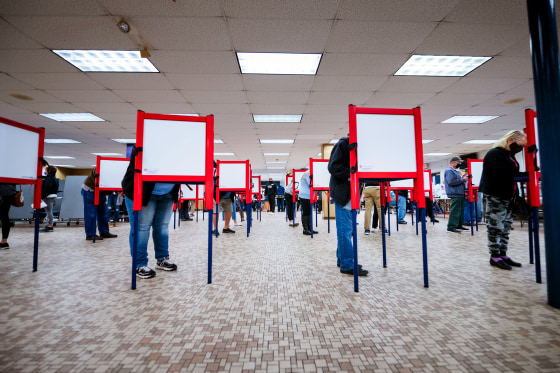President Joe Biden's victory last fall was built on significant swings among men, suburbanites and voters who did not cast ballots in the 2016 election, a new Pew Research Center analysis found.
Former President Donald Trump, meanwhile, appears to have made inroads with women and Latinos while increasing his support among rural voters.
The survey was part of an effort dating back to the aftermath of the 2016 election in which Pew sought to track turnout and voter preference between the past two presidential elections and the 2018 midterms. Pew surveyed 11,818 adults online last November, 10,640 adults in November 2018 and 4,183 adults in late 2016 following the election. Additionally, Pew verified respondents' turnout using voter files.
Biden won last fall's election over Trump 306 to 232 in the Electoral College and bested him by 4 points in the popular vote. The analysis found that Biden won voters who cast ballots in 2018 and 2016 — a group that made up 62 percent of the 2020 electorate — by 7 points. Among voters who cast ballots in 2018 but not 2016, which comprised 6 percent of the 2020 electorate, Biden won by 26 points, besting Trump 62 percent to 36 percent.
Voters who did not vote in either election broke for Biden by 2 points, while those who voted in 2016 but not 2018 backed Trump by 8 points.
Broken down by geography, suburban voters appear to have had the largest impact. In 2016, just 45 percent of this voting group backed Democratic nominee Hillary Clinton while last fall 54 percent backed Biden. On his way to the White House, Trump won white suburban voters by 16 points, beating Clinton by a 54 percent to 38 percent spread. This time around, Trump won that group by just 4 points.
Among rural voters, a group that broke strongly for Trump in 2016, the former president was able to increase his support from 59 percent in 2016 to 65 percent last fall.
Biden's gains with men coupled with Trump's gains among women narrowed the gender gap. Biden cut into what was an 11-point advantage Trump had over Clinton with men in 2016 and shrunk it to just 2 points in 2020. Among white men, Trump went from winning by 30 to winning by 17.
Trump did manage to boost his support with women from 39 percent to 44 percent, and with white women he improved from 47 percent to 53 percent.
Trump also made inroads with Latino voters, growing his share from 28 percent in 2016 to 38 percent last fall. Roughly the same shares of Black voters cast ballots for Democrats or Republicans in each of the elections Pew analyzed.

